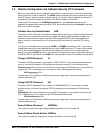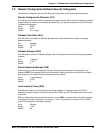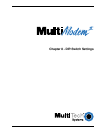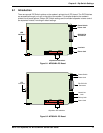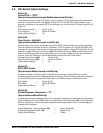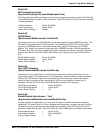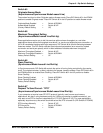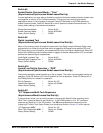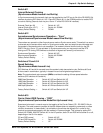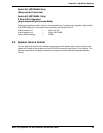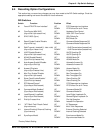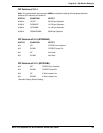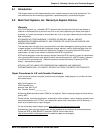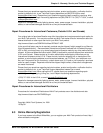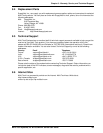
82
Chapter 8 - Dip-Switch Settings
Multi-Tech Systems, Inc. MT2834BA/BL Series User Guide
Switch #11
Internal/External Clocking
(Synchronous Mode/Leased Line/Dial-Up)
In Synchronous mode, the transmit clock can be supplied by the DTE on pin 24 of the RS-232C/V.24
interface by placing DIP-Switch #11 UP. Place DIP-Switch #11 in the DOWN position to enable DCE
to control clocking (internal clock via pins 15 and 17 of the RS-232/V.24 interface).
External Clock (pin 24) = Switch #11 UP
Internal Clock (pins 15/17) = Switch #11 DOWN
Factory Default Setting = DOWN
Switch #12
Asynchronous/Synchronous Operation -- "Sync"
(Asynchronous/Synchronous Mode/Leased Line/Dial-Up)
The modem can operate in either Asynchronous mode or Synchronous mode. This switch is a means
to alternate and to access either mode. In Synchronous mode, start and stop bits are eliminated and
the modem’s Command mode is not accessible. The modem's internal clock circuits (on the RS-
232C/V.24 pins 15 and 17) are activated. In Synchronous mode, you may want to set the RTS
forcing and CTS forcing DIP-Switches so that both of signals act normally (not forced on).
Synchronous Operation = Switch #12 UP
Asynchronous Operation = Switch #12 DOWN
Factory Default Setting = DOWN
Switches #13 and #14
Speed Switches
(Synchronous Mode/Leased Line)
DIP-Switches #13 and #14 are used to set the modem’s data transmission rate. Switches #13 and
#14 are used in combination, typically in leased-line and call origination applications.
Note: The modem baud rate command ($MBn) overrides the setting of these speed selection
switches (DIP switches #13 and #14).
28800 bps Operation = Switch #13 UP and Switch #14 UP
19200 bps Operation = Switch #13 DN and Switch #14 UP
14400 bps Operation = Switch #13 UP and Switch #14 DN
9600 bps Operation = Switch #13 DN and Switch #14 DN
Factory Default Setting = Switch #13 UP and Switch #14 UP
Switch #15
Carrier Detect/DSR Forcing -- "DSR"
(Asynchronous/Synchronous Mode/Dial-Up/Leased Line)
Some terminals react in unusual ways to the toggling of the Carrier Detect (CD - RS-232C/V.24 pin
6) signals. The most common symptom is that the modem does not respond to commands, or does
not echo characters. In these cases, it is advisable to force these two signals On in order for the
terminal to communicate properly with the modem in Command mode. This is done by setting DIP-
Switch #15 DOWN. With DIP-Switch #15 in the UP position, both CD and DSR will be either on or off,
depending on the On-Line status.
CD and DSR normal = Switch #15 UP
CD and DSR forced On = Switch #15 DOWN
Factory Default Setting = UP



